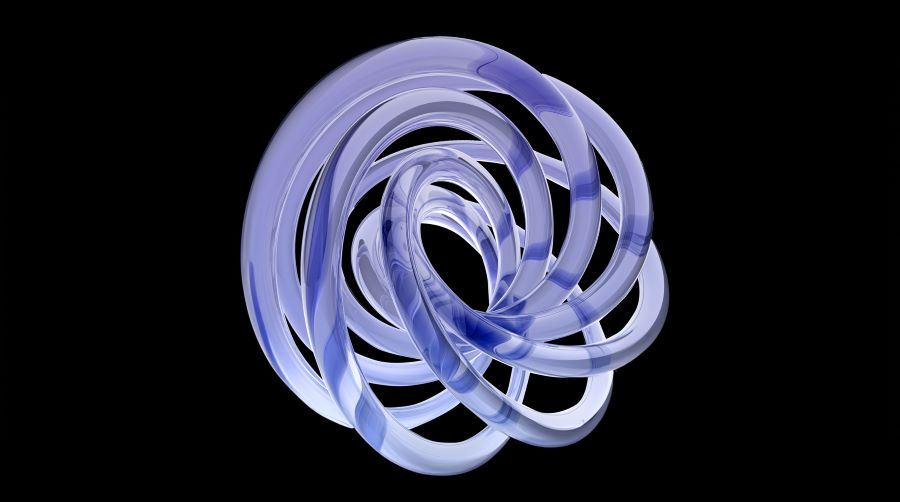Playing it Cool
Playing it Cool


LSU football uses helmet technology to help players breathe and stay cool. Air drawn from inside the helmet and blown across the player’s face or visor uses adjustable tube outlets.
The Louisiana State University (LSU) Tigers football team have new specialized equipment in their arsenal as they prepare for the upcoming Division I NCAA season. Several of LSU’s helmets are outfitted with the Tigeraire Cyclone V2 Air Accelerator technology to help players breathe better and stay cool in the hot and humid Louisiana weather. Air is drawn from inside the helmet and blown across the player’s face or visor using adjustable tube outlets. The product features two fans, one for each side, air tubes which serve as tiny ducts, and a rechargeable battery pack.
The concept for the Air Accelerator technology was developed in the summer of 2020, as the LSU Athletic Department explored ways to play safely without spreading COVID-19. They quickly realized masks and full visors on the players helmets significantly impacted breathing and decided to call on local industry experts to help them navigate solutions. When Jack Karavich, the CEO of Tigeraire, began working with LSU, he was “in awe of the challenges associated with wearing a helmet. The weight, the way they fit, how much they restrict breathing, and a variety of other factors.”
Between Karavich’s background in physics and engineering, LSU Assistant Athletic Director of Athletic Equipment Greg Stringfellow’s understanding of the sport and equipment limitations, along with several members from LSU’s athletic department, they developed a fan prototype to actively draw stagnant air from inside the helmet. The heat dissipates inside the blower unit, and move air towards the player’s face, which could improve breathing when wearing a mask. Players testing the protype quickly realized not only did the fan help them breath better, regardless of whether they were wearing a mask, but it also created a cooling effect. “Players noticed the airflow around their face, and they could breathe better. Which was a big deal when it's so hot and humid out,” Stringfellow said.
Football is a physical sport, requiring extensive protective equipment to keep the players safe and allow them to stay on the field throughout the season. The equipment walks a fine line to balance protection for the athlete and allow adequate heat loss and prevent heat stress and heat exhaustion. When the large muscle groups of the body work at vigorous levels, like during a football game, they produce a significant amount of heat. As the athletes’ bodies produce heat they sweat, and as the sweat evaporates it releases a significant amount of latent energy in the form of heat and provides a cooling effect.
Become a Member: How to Join ASME
The rate of sweat evaporation is dependent on several factors, one being air movement across the skin’s surface. For the sweat to evaporate and release heat from the body, there needs to be continuous air movement across the skin. When a barrier is placed between the skin’s surface and the air, like football equipment, the sweat remains and starts to pool. This leads to dehydration from sweating without the cooling effects of evaporation.
Another factor impacting sweat evaporation is the relative humidity in the air. When humidity is high, the air is already holding a large amount of moisture, hindering evaporation of sweat from the skin. In hot and humid regions, such as Baton Rouge, La., where LSU is located, athletes need as much help as they can to release heat and continue performing on and off the field.
The NCAA Division I manual outlines the minimum allowable uniform requirements for players in warm weather. The minimum uniform includes a helmet, shoulder pads, jersey, hip pads, thigh pads, knee pads, football pants, and shoes. A research paper published in the American College of Sport Medicine looked at the thermal characteristics of football uniforms and found even the minimum warm weather attire would impact an athletes ability to release heat by as much as 42 percent when compared to a t-shirt and shorts. Since the human body releases most of its heat through the head, neck, and shoulders, the Air Accelerator technology is a game changer for LSU and the sport of football.
“The Cyclone doesn't change the helmet. It fits into the already vacant space. It was designed to function without having to alter the helmet at all,” Stringfellow said. The system runs on a battery pack with a magnetic charger and cover to facilitate quick and easy charging and block out sweat and mud from accumulating during play.
Nicole Imeson is an engineer and writer in Calgary, Alberta.

The concept for the Air Accelerator technology was developed in the summer of 2020, as the LSU Athletic Department explored ways to play safely without spreading COVID-19. They quickly realized masks and full visors on the players helmets significantly impacted breathing and decided to call on local industry experts to help them navigate solutions. When Jack Karavich, the CEO of Tigeraire, began working with LSU, he was “in awe of the challenges associated with wearing a helmet. The weight, the way they fit, how much they restrict breathing, and a variety of other factors.”
Between Karavich’s background in physics and engineering, LSU Assistant Athletic Director of Athletic Equipment Greg Stringfellow’s understanding of the sport and equipment limitations, along with several members from LSU’s athletic department, they developed a fan prototype to actively draw stagnant air from inside the helmet. The heat dissipates inside the blower unit, and move air towards the player’s face, which could improve breathing when wearing a mask. Players testing the protype quickly realized not only did the fan help them breath better, regardless of whether they were wearing a mask, but it also created a cooling effect. “Players noticed the airflow around their face, and they could breathe better. Which was a big deal when it's so hot and humid out,” Stringfellow said.
Science of sweat
Football is a physical sport, requiring extensive protective equipment to keep the players safe and allow them to stay on the field throughout the season. The equipment walks a fine line to balance protection for the athlete and allow adequate heat loss and prevent heat stress and heat exhaustion. When the large muscle groups of the body work at vigorous levels, like during a football game, they produce a significant amount of heat. As the athletes’ bodies produce heat they sweat, and as the sweat evaporates it releases a significant amount of latent energy in the form of heat and provides a cooling effect.
Become a Member: How to Join ASME
The rate of sweat evaporation is dependent on several factors, one being air movement across the skin’s surface. For the sweat to evaporate and release heat from the body, there needs to be continuous air movement across the skin. When a barrier is placed between the skin’s surface and the air, like football equipment, the sweat remains and starts to pool. This leads to dehydration from sweating without the cooling effects of evaporation.
Another factor impacting sweat evaporation is the relative humidity in the air. When humidity is high, the air is already holding a large amount of moisture, hindering evaporation of sweat from the skin. In hot and humid regions, such as Baton Rouge, La., where LSU is located, athletes need as much help as they can to release heat and continue performing on and off the field.
Uniform limitations
The NCAA Division I manual outlines the minimum allowable uniform requirements for players in warm weather. The minimum uniform includes a helmet, shoulder pads, jersey, hip pads, thigh pads, knee pads, football pants, and shoes. A research paper published in the American College of Sport Medicine looked at the thermal characteristics of football uniforms and found even the minimum warm weather attire would impact an athletes ability to release heat by as much as 42 percent when compared to a t-shirt and shorts. Since the human body releases most of its heat through the head, neck, and shoulders, the Air Accelerator technology is a game changer for LSU and the sport of football.
More for You: Helmets That Absorb and Respond to Collisions
The fans, which take 10 minutes and no tools to install, “reside inside the cavities in between the padding of the helmet with the air tubes running towards the forehead” Karavich explained. The tubes are fully customizable within the helmet, allowing the user to direct the flow of air to optimize heat release and improve breathing.“The Cyclone doesn't change the helmet. It fits into the already vacant space. It was designed to function without having to alter the helmet at all,” Stringfellow said. The system runs on a battery pack with a magnetic charger and cover to facilitate quick and easy charging and block out sweat and mud from accumulating during play.
Nicole Imeson is an engineer and writer in Calgary, Alberta.




.png?width=854&height=480&ext=.png)


